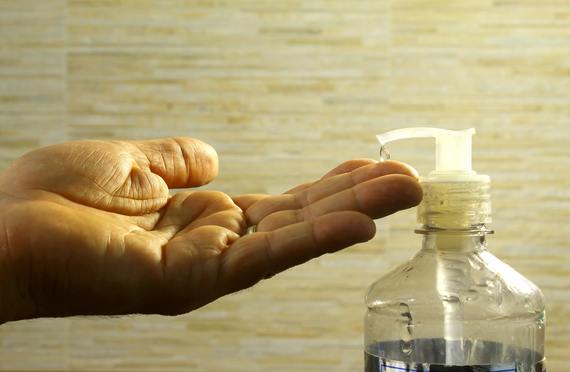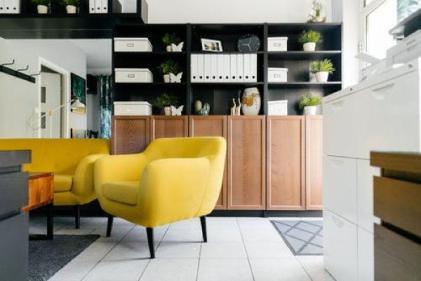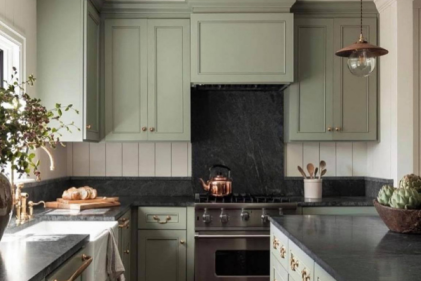 Your kitchen will contain most of the ingredients you need to make home-made cleaning products. The recipes used to make these cleaning agents are almost all found in your kitchen. Not only will your home-made cleaners be safer, they will be cheaper too.
Your kitchen will contain most of the ingredients you need to make home-made cleaning products. The recipes used to make these cleaning agents are almost all found in your kitchen. Not only will your home-made cleaners be safer, they will be cheaper too.
Before you start mixing ingredients, you need to buy a few re-usable containers, preferably the kind with spray-tops. Calibrated bottles are better, since it is easier to keep track of ingredients quantities when mixing the cleaner solutions. Label your solutions well, to avoid confusion. The following ingredients have explanations:
Liquid soap refers to castile soap. Castile soap is a mild soap, traditionally made from olive oil. Other vegetable oils can be used too. Coconut oil soap is an especially good alternative to petroleum-based soaps.
Vinegar refers to distilled white vinegar. This can be bought in large bottles at supermarkets. The vinegar has an odour when it is wet, but when dry, there is no smell.
Washing soda and borax are chemically related to bicarbonate of soda (baking soda), but are stronger and can irritate your skin when handled. Be sure to wear gloves when mixing them into solutions. Borax is toxic so keep it locked away from your children.
All mixtures and chemical ingredients need to be locked in a cupboard that is out of your children's reach. All bottles must be clearly labelled, along with a demarcation indicating toxin or poison.
If you don't have time to make your own cleaning agents, there are environmentally-friendly, safer alternatives available at supermarkets.
To polish metal, make use of sliced lemon to remove tarnish. Lemon is a natural acid. If there are tough stains, add baking soda on the lemon, then rub it in. To clean silverware, you can use a simple electrolysis process. Line a glass or plastic bowl with aluminium foil then fill it with salty water. Leave your silverware in the solution to soak. The tarnish will dissolve and end up being deposited on the aluminium foil. Rinse and dry when the items are clean. Buff and polish the silverware with a soft cloth once dry.
Air fresheners can be made from vinegar and bicarbonate of soda. The vinegar does the job of deodorising, while the baking powder absorbs odours – the trick of using baking powder in the fridge as an odour absorber is known to many people. An easy recipe for air freshener is as follows: Mix one teaspoon of bicarbonate of soda, one teaspoon of vinegar (alternatively, lemon juice) and two cups of hot water into a spray bottle. Zeolite can also be used for absorbing odour. Use either in pantries, bathrooms and fridges.
Regular vacuuming is a great way to keep floors and carpets clean. Make your vacuuming more effective by using a HEPA filter and doing multiple passes over heavy foot-traffic areas. HEPA filters trap very fine particles, which normally exit the vacuum cleaner via the exhaust.
Linoleum tends to get greasy; you can clean it with the following solution: ¼ cup of washing soda, one teaspoon of liquid soap, ¼ cup of vinegar and two gallons of water. Add the dry ingredients to the bucket first, to stop them form splashing out. You can add six tablespoons of cornstarch to the mixture for a polishing effect. Do not use this mixture on waxed floors.
You can disinfect floors, using the following solution: Mix together two gallons of hot water with a half-cup of borax. Put the borax into the bucket first to avoid splashing.
Clean wooden flooring with vinegar. Vinegar is also a good disinfectant. Use one cup of vinegar, mixed with one bucket of warm water to clean wooden floors that are particularly dirty. This mixture can also be used on tiled floors.
Carpets and rugs can be kept clean with regular vacuuming. Dry bicarbonate of soda can be sprinkled over carpets to absorb odours. The baking powder should lie for 15 minutes, then it needs to be vacuumed up. Chemical carpet cleaners have various health risks. If you want to steam clean your carpets, use plain water and make sure that the carpets are dried out thoroughly to avoid mould from growing.
Brighten the colour of your laundry by adding half a cup of strained lemon juice into the machine during the rinse cycle. To make your own fabric softener, add half a cup of vinegar to the rinse cycle. You can use less washing powder by adding baking soda or washing soda. The additives will increase the strength of the washing solution too. If you use liquid detergent, add half a cup of soda at the beginning of the wash cycle. If you use granular or powdered detergent, add half a cup of soda during the rinse cycle.
Hydrogen peroxide can be used instead of chlorine bleach. Be careful of the strong fumes and protect your hands with rubber gloves. Many delicate items that are supposed to be dry-cleaned can be washed at home manually. Simply use cold water, mild liquid soap and wring out the garments gently. Lie them out flat to dry.



